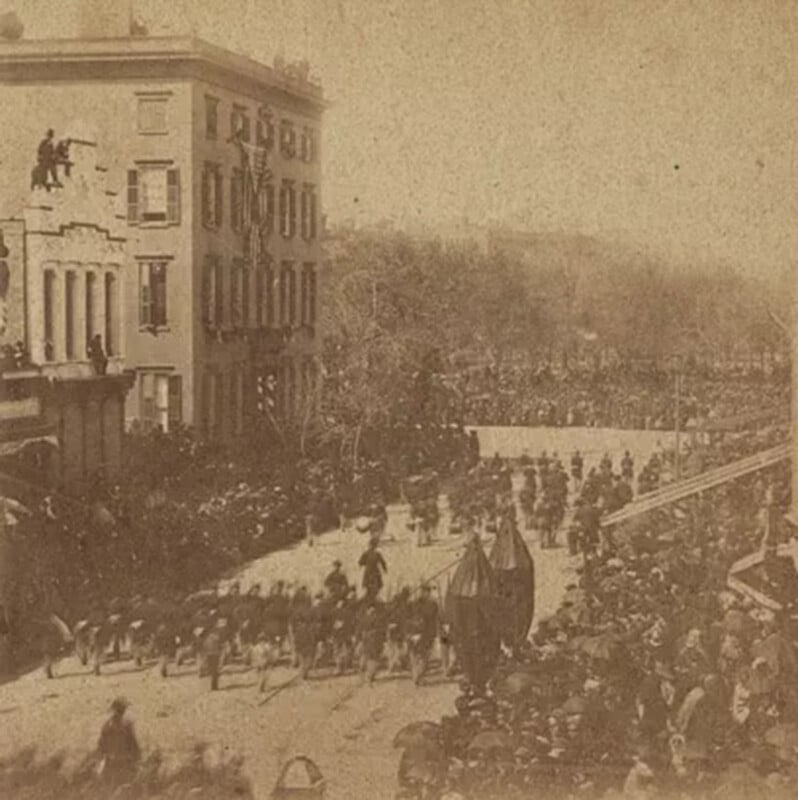Presidents Who Were Photographed with Other Presidents Before They Became President
A surprising number of eventual U.S. presidents have been photographed with other presidents long before reaching office.
On the r/Presidents subreddit, user TikiVin posted an image of then-President John F. Kennedy shaking hands with future President Bill Clinton. TikiVin wonders, “Which presidents are photographed with other presidents before they become president themselves?” As it turns out, there is incredible history of these sorts of foreshadowing photographs.
In 2013, NBC News published an article about the portrait, which was captured on July 24, 1963, by Arnie Sachs.
Clinton was also photographed with President Jimmy Carter in 1978 when Clinton was serving as the governor of his native Arkansas.

A Future President Watches a Presidential Funeral Procession
As the National Archives explains, “History is full of strange coincidences.” While photography certainly missed its fair share of United States’ presidents, a notable coincidence caught on camera goes back to April 25, 1865.
When researching a book about Abraham Lincoln in the 1950s, author Stefan Lorant came across a photo of the funeral procession for President Abraham Lincoln in New York City.
“At first it appeared like one of any number of photographs of Lincoln’s funeral procession, until he identified the house on the corner as that of Cornelius van Schaack Roosevelt, the grandfather of future President Teddy Roosevelt and his brother Elliot,” the National Archives explains.

That is a noteworthy coincidence in and of itself. However, two boys are peering out the window of Cornelius’ house, one of whom is a young Theodore Roosevelt, who was about six and a half years old. He would first occupy the president’s office in 1901 when he filled the void left by President McKinley following his assassination.
Roosevelt’s Political Reach Carries Onward
Despite being fifth cousins and having a significant influence over Franklin D. Roosevelt, Theodore Roosevelt was rarely photographed with his cousin.
“I think Franklin always intended to go into politics. I think Uncle Ted was responsible for that,” said Eleanor Roosevelt.

A James Jamboree in the 1840s
One of the earliest photos of a sitting president may not represent a stunning coincidence like a young Teddy Roosevelt watching Lincoln’s funeral procession. Still, it does reflect a fascinating bit of history. The image below was taken in 1846, 1847, or perhaps even 1849. No matter what date is correct, it is among the earliest images of a United States president.

The image shows President James Polk, third from the right, with a group of people, including the then-Secretary of State and future president, James Buchanan, at the far left. Also pictured are Sarah Childress Polk and Dolley Madison, widow of President James Madison, among other unnamed individuals.
The First Official Presidential Portrait is Lost
Some very old photographic presidential portraits are featured in this gallery on the Library of Congress’ website, although some paintings are mixed in. Some of the photographs show presidents following their time in office.
Per History Colored, the oldest photo of a president that survives to this day is an image of John Quincy Adams taken in 1843 when he was 75 years old, 14 years after he served as president.
However, the first president to have his photo taken was William Henry Harrison. He had his inauguration portrait captured on March 4, 1841. Unfortunately, the image has been lost.

JFK Returns to the Story: Lyndon B. Johnson Uses Photo Editing to Further his Political Career
There are plenty more photos of presidents before they were presidents, but the one more worth mentioning is an early example of photo editing.
In 1937, a young Lyndon B. Johnson shook hands with President Franklin D. Roosevelt. The image is famous because it was used in Johnson’s 1941 senatorial campaign. However, the original photo features a third person, Texas Governor James Allred.

As part of his senate campaign, Johnson had Governor Allred airbrushed from the image, as seen in the background of this image. This may be one of the first examples of a politician using photo manipulation techniques.
Lyndon B. Johnson ended up serving as the 36th President of the United States from 1963 to 1969, after ascending to the role following John F. Kennedy’s death, bringing this look at the history of presidential photo coincidences full circle.